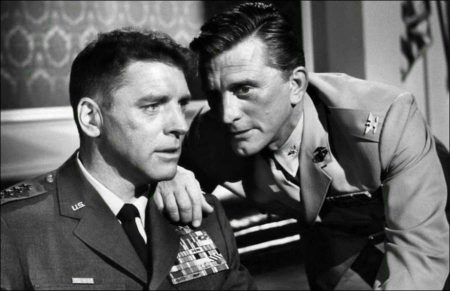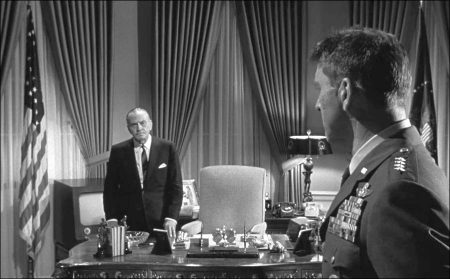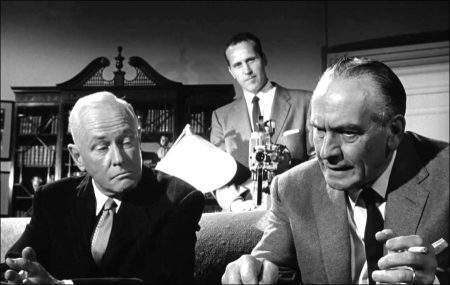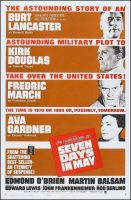Seven Days in May movie storyline. At the height of the cold war, a weakened President and a popular four-star general face off in a battle for control of the US government. President Jordan Lyman has successfully negotiated an arms reduction treaty with the Soviet Union, but his measure is unpopular and does not sit well with General James Mattoon Scott, the Chairman of the Joint Chiefs of Staff who has been quite vocal in his opposition. Marine Corps Col. Jiggs Casey, who works for Scott, comes to the conclusion that senior military officers are plotting a coup to overthrow the government. Working with a small circle of reliable and loyal officials, President Lyman tries to get the evidence of Scott’s treachery and stop him.
Seven Days in May is a 1964 American political thriller film about a military-political cabal’s planned takeover of the United States government in reaction to the president’s negotiation of a disarmament treaty with the Soviet Union. The picture was directed by John Frankenheimer; starring Burt Lancaster, Kirk Douglas, Fredric March, and Ava Gardner; with the screenplay written by Rod Serling based on the novel of the same name by Fletcher Knebel and Charles W. Bailey II, published in September 1962.
The book was written in late 1961 and into early 1962, during the first year of the Kennedy administration, reflecting some of the events of that era. In November 1961, President John F. Kennedy accepted the resignation of vociferously anti-Communist General Edwin Walker who was indoctrinating the troops under his command with personal political opinions and had described former President Harry S. Truman, former United States Secretary of State Dean Acheson, former First Lady Eleanor Roosevelt and other recent still-active public figures as Communist sympathizers.
Although no longer in uniform, Walker continued to be in the news as he ran for Governor of Texas and made speeches promoting strongly right-wing views. In the film version of Seven Days in May, Fredric March, portraying the narrative’s fictional President Jordan Lyman, mentions General Walker as one of the “false prophets” who were offering themselves to the public as leaders. (John F. Kennedy assassin Lee Harvey Oswald purportedly fired rifle shots into the home of General Walker in April 1963.)
As they collaborated on the novel, Knebel and Bailey, who were primarily political journalists and columnists, also conducted interviews with another controversial military commander, the newly appointed Air Force Chief of Staff, General Curtis LeMay, who was angry with Kennedy for refusing to provide air support for the Cuban rebels in the Bay of Pigs Invasion. The character of General James Mattoon Scott itself was believed to be inspired by both General Curtis LeMay and General Edwin Walker.
President Kennedy had read Seven Days in May shortly after its publication and believed the scenario as described could actually occur in the United States. According to Frankenheimer in his director’s commentary, production of the film received encouragement and assistance from Kennedy through White House Press Secretary Pierre Salinger, who conveyed to Frankenheimer Kennedy’s wish that the film be produced and that, although the Pentagon did not want the film made, the President would arrange to be visiting Hyannis Port for a weekend when the film needed to shoot outside the White House.
Seven Days in May (1964)
Directed by: John Frankenheimer
Starring: Burt Lancaster, Kirk Douglas, Fredric March, Ava Gardner, Edmond O’Brien, Martin Balsam, Andrew Duggan, Helen Kleeb, Hugh Marlowe, George Macready, Richard Anderson
Screenplay by: Rod Serling
Production Design by: Cary Odell
Cinematography by: Ellsworth Fredricks
Film Editing by: Ferris Webster
Set Decoration by: Edward G. Boyle
Music by: Jerry Goldsmith
MPAA Rating: None.
Distributed by: Paramount Pictures
Release Date: February 12, 1964 (Washington, DC)
Views: 182



